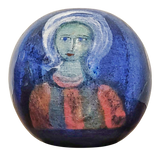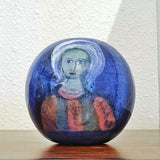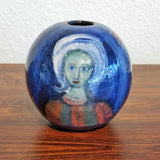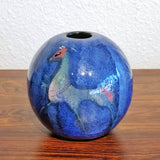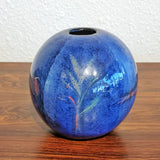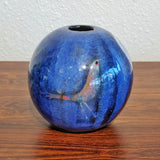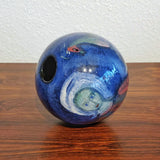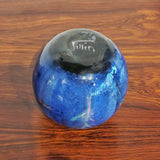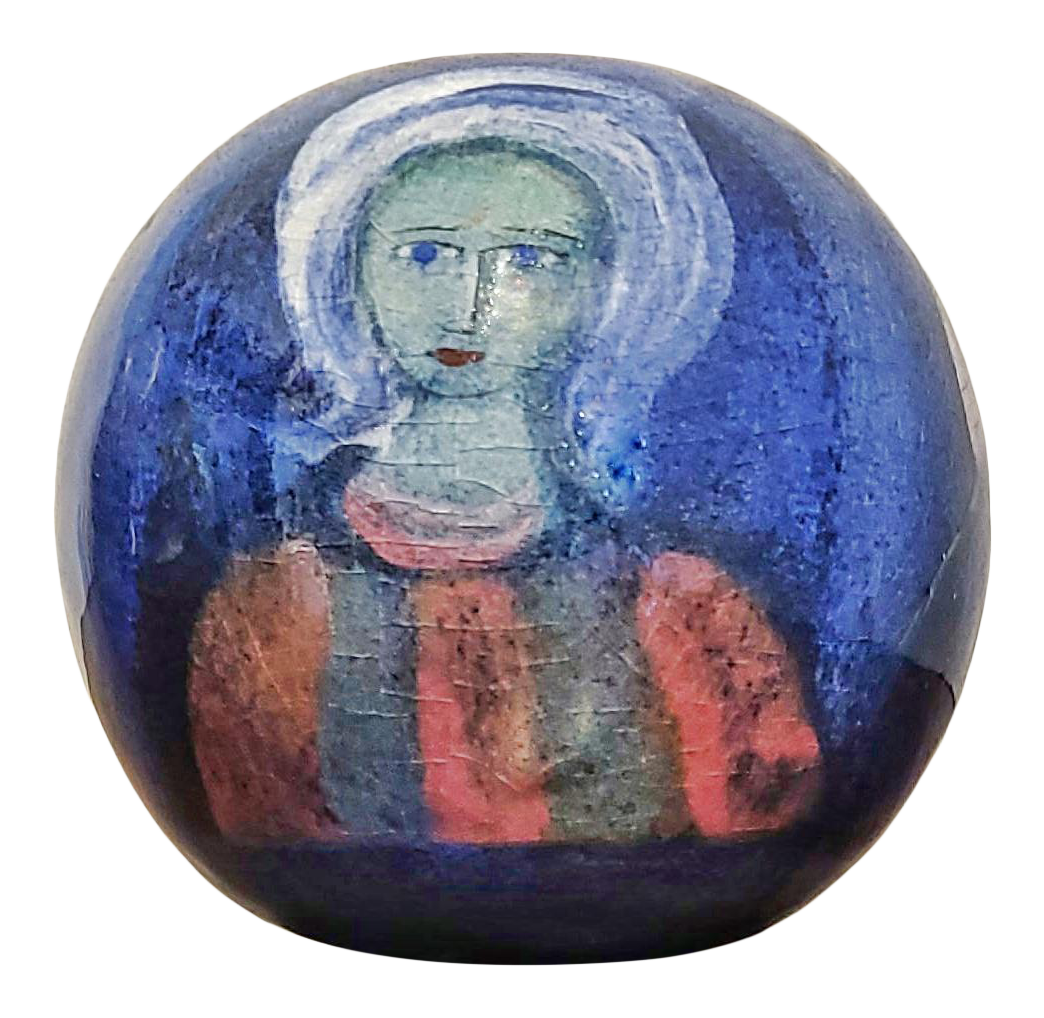
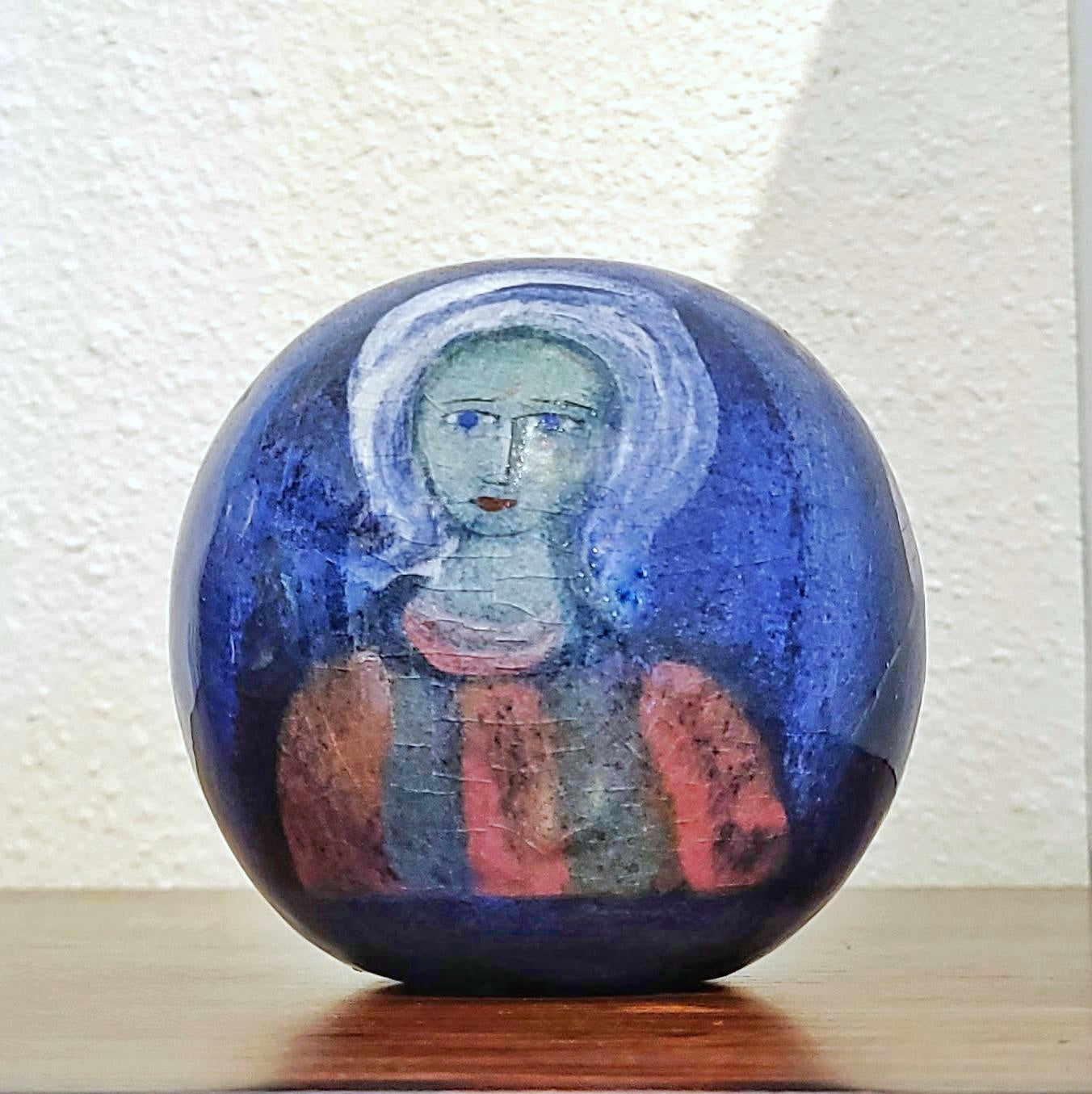

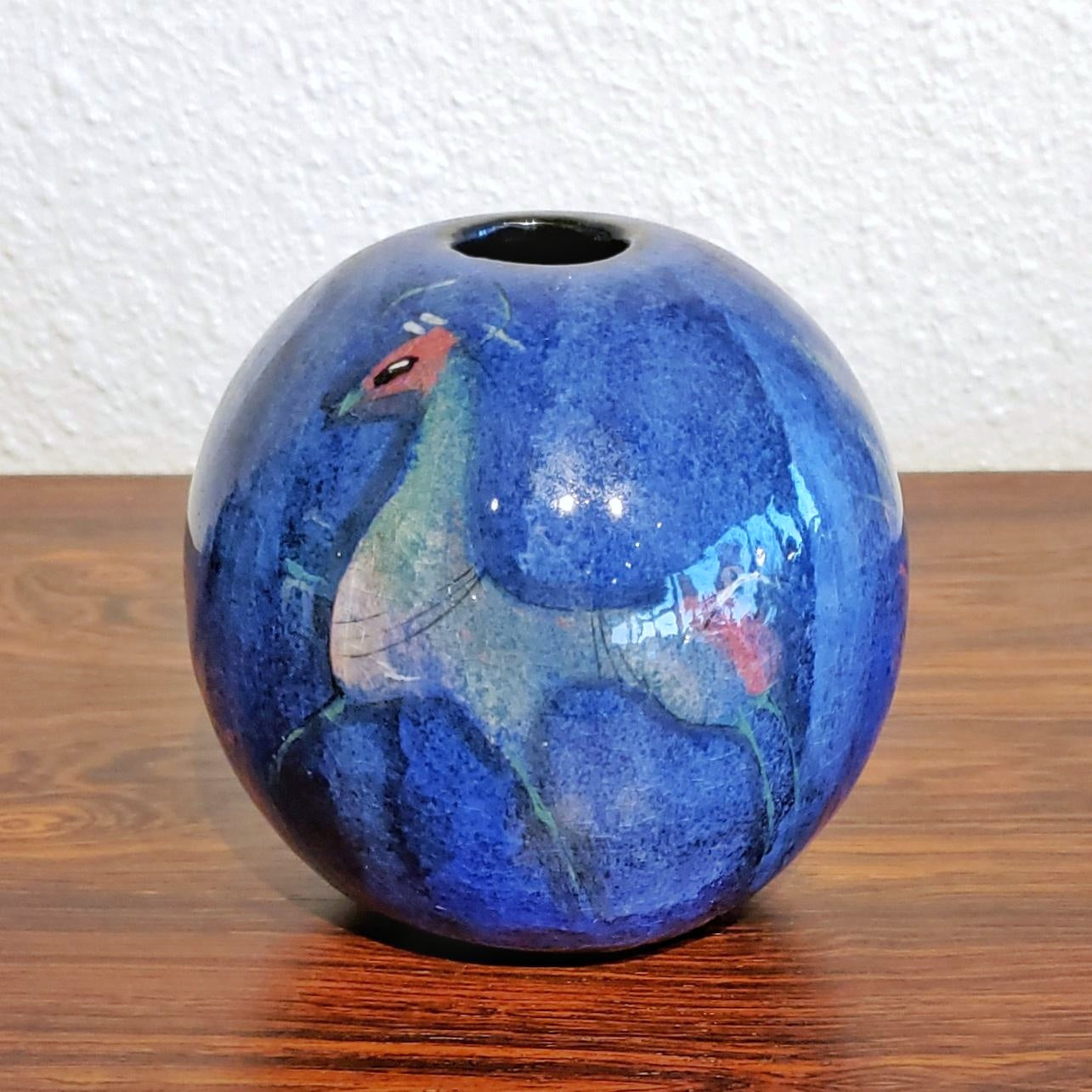

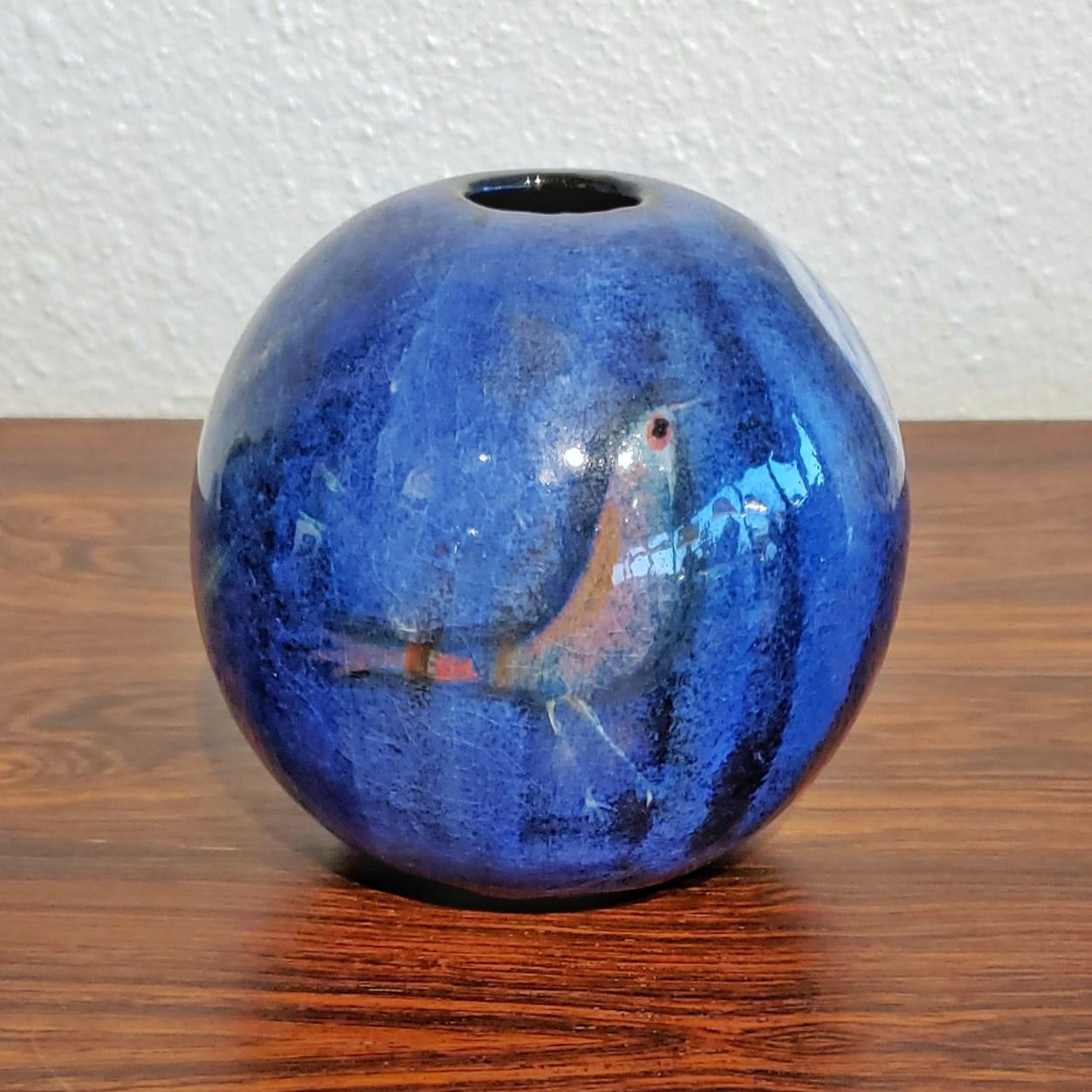
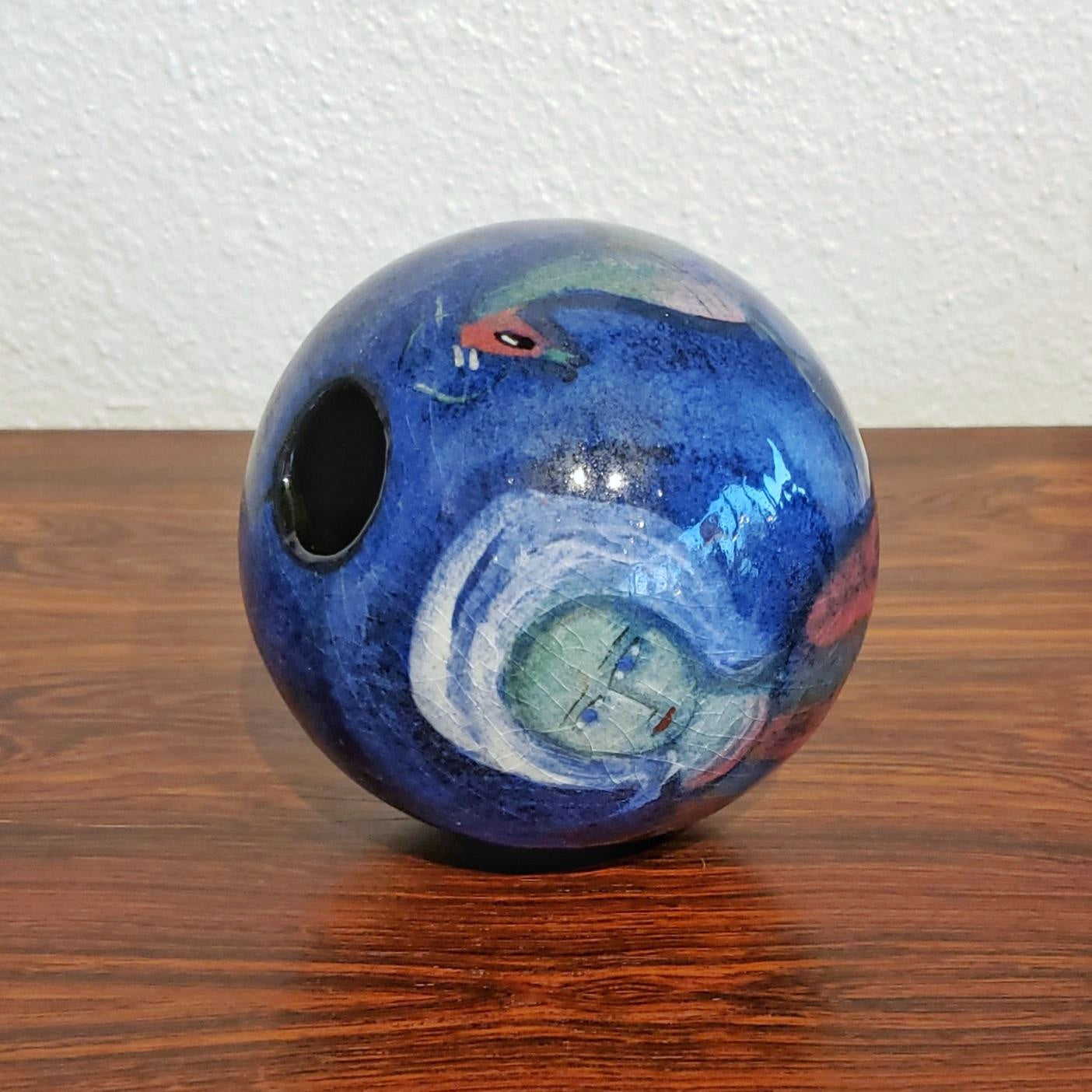

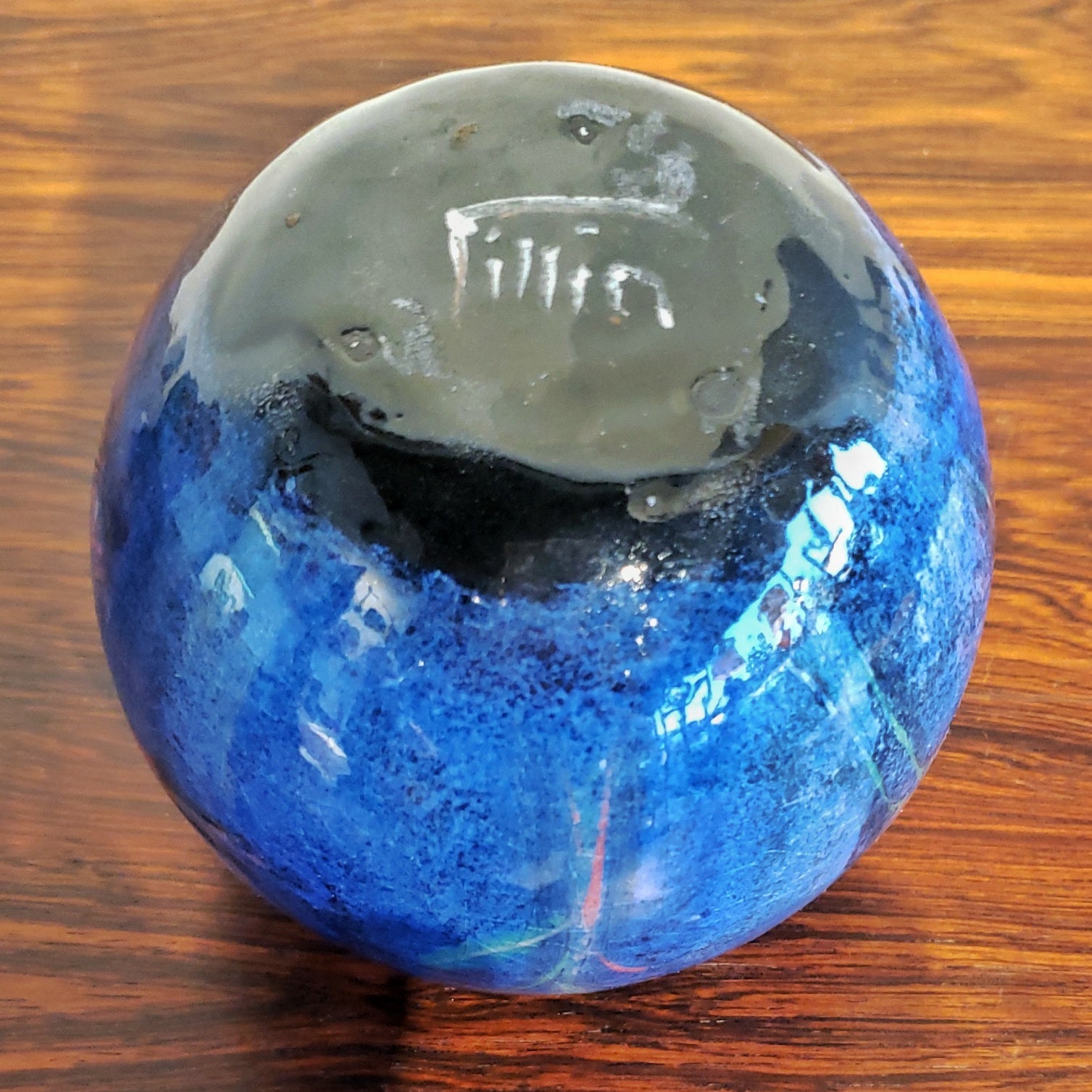
POLIA PILLIN BALL VASE
CONTACT US HERE ABOUT THIS ITEM.
A beautiful hand-painted ball vase featuring a typical motif of animals and a woman on a blue ground by renowned Polish-American ceramicist Polia Pillin.
POLIA PILLIN (1909–1992) was a Polish-American painter and potter during the previous century, best known for distinctive, highly crazed, hand-painted ceramics, often produced in collaboration with her husband Bill. She was born Polia Sukonic in Częstochowa, Poland, to a talented family of weavers, potters, and coppersmiths. Sent to live in Chicago at fifteen in 1924—near the tail-end of the mass migration of Eastern European Jews to the US—she worked long hours in the garment industry during the day and took night classes in painting and sculpture at the local Jewish People’s Institute. In 1927 a cousin introduced her to William “Bill” Pillin (1910–1985), a fellow émigré whose family had settled in Chicago after fleeing pogroms in the Ukraine. They were married that year.
Bill aspired to become a published poet, and an opportunity arose during the Depression for him to secure a job with the Federal Writers’ Project. The travel involved took him all across the US, including the Southwest. In 1936 he returned with Polia to New Mexico, and they moved onto a sixteen-acre farm outside of Albuquerque. Conditions were harsh, with the closest water source several miles away, but they found the isolation inspiring. After the birth of their son Boris in 1940, however, the Pillins decided to rejoin civilization, and they moved back to Chicago. (During his lifetime, Bill’s verse would appear in over 100 literary reviews, and he would publish nine, well-received collections of work.)
Bill found a position in book publishing in Chicago that paid enough to support the family. This allowed Polia to explore painting in watercolor and oil full-time. Her one-woman exhibition at the Chicago Art Institute drew favorable notices and the attention of the Sun-Times. During the show, Polia became fascinated by the Institute’s pottery display, and, in 1946, she took a six-week course in ceramics at Chicago’s Hull House. She fired pieces in the kilns there until the facility was repurposed for the rehabilitation of returning WWII veterans. Polia then moved her fledgling business to the Pillin apartment, with a wheel and an improvised kiln in the kitchen. During these studio-in-the-kitchen years, she taught Bill how to make pots. Polia never stopped throwing pots herself and always did all of the painting.
Polia's decoration technique involved adding oxides to slip (watery clay) in various intensities and combinations to develop a palette of extraordinary range. With these slurries, she painted her ethereal images of women, cats, horses, and birds on greenware (unfired) pots. Chagall-like in color, her women dance, play instruments, ponder, and ride. Interestingly there are no children, houses, meals, or other signs of ordinary domesticity. Polia double-fired her decorated pots using a transparent glaze to produce a high-gloss finish. The Byzantine flavor of Pillins’ work has often been noted.
The couple’s endeavors soon outgrew the space, and, in 1948, they moved to Los Angeles. They purchased a modest home with a garage where the Pillin Art Pottery Company was born. At some point in the ’60s, they experimented with using molds to keep up with demand—they were selling pieces as fast as they could make them—but even then, both Polia and Bill continued to throw pots. More than 95% of their work is highly crazed. This should not surprise, as the small studio did not have a team of chemists or the special equipment available to large commercial operations.
Although the vast majority of the Pillin Art Pottery was produced in California, there are early examples from the Chicago kitchen studio. These rare pieces will usually be marked with a “46“ or “47“ for the year. Some works can be found with an inscribed “W + P” above the Pillin signature. This was an early indication that Bill had thrown the piece and Polia had decorated it, a practice that later became commonplace. Practically all Pillin Art Pottery is marked with a stylized “Pillin” signature in black. There was some amount of variation and evolution in the signature; close inspection can sometimes help to date pieces. Earlier pieces tend to be thicker in construction. Nearly all Pillin pottery is made from a distinctive red brick-colored clay.
Polia made her last known piece in 1991, a year before her death. No production records were ever kept, and most pieces were unique, so no catalog of her work would ever be complete. The total output of pottery from Polia is hard even to estimate.
Pottery from Polia Pillin is held in the collections of the Dallas Museum of Fine Art and the Syracuse Museum of Fine Art. Pillin pieces remain highly collectible with prices starting in the high hundreds and many in the thousands.
. . .Humble clay becomes a medium for painting. The limit of which is defined only by the zeal and inspiration of the artist. – POLIA PILLIN
“TO A CUSTOMER” by William Pillin
If you dislike our pot, mister,
Go buy from another.
But don't stand there with a turned-up nose,
you bastard!
I labored in shaping the slender amphora
and Polia designed a small alleluia on it.
Go now.
Your shadow lingers over the highlights.
DETAILS
Designer – POLIA PILLIN
Design Period/Year – 1950s
Maker – PILLIN ART POTTERY
Production Period/Year – 1950s
Origin – USA
Styles/Movements – BOHO CHIC; MID-CENTURY MODERN; FIGURATIVE
Materials – CERAMIC
Colors – BLUE, GREEN, RED, WHITE
Condition – Excellent vintage condition. May show minor signs of previous ownership and use.
Dimensions – 4" DIAM. × 4" H

